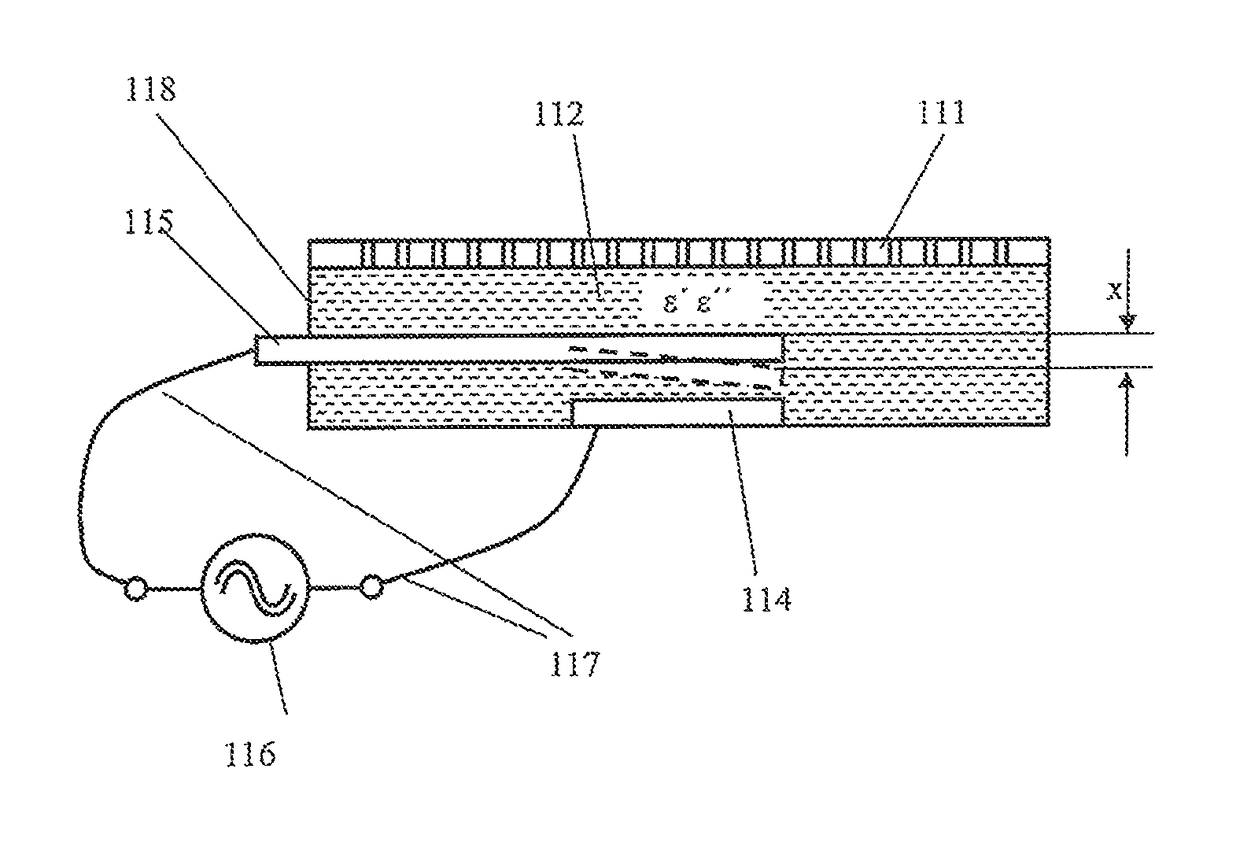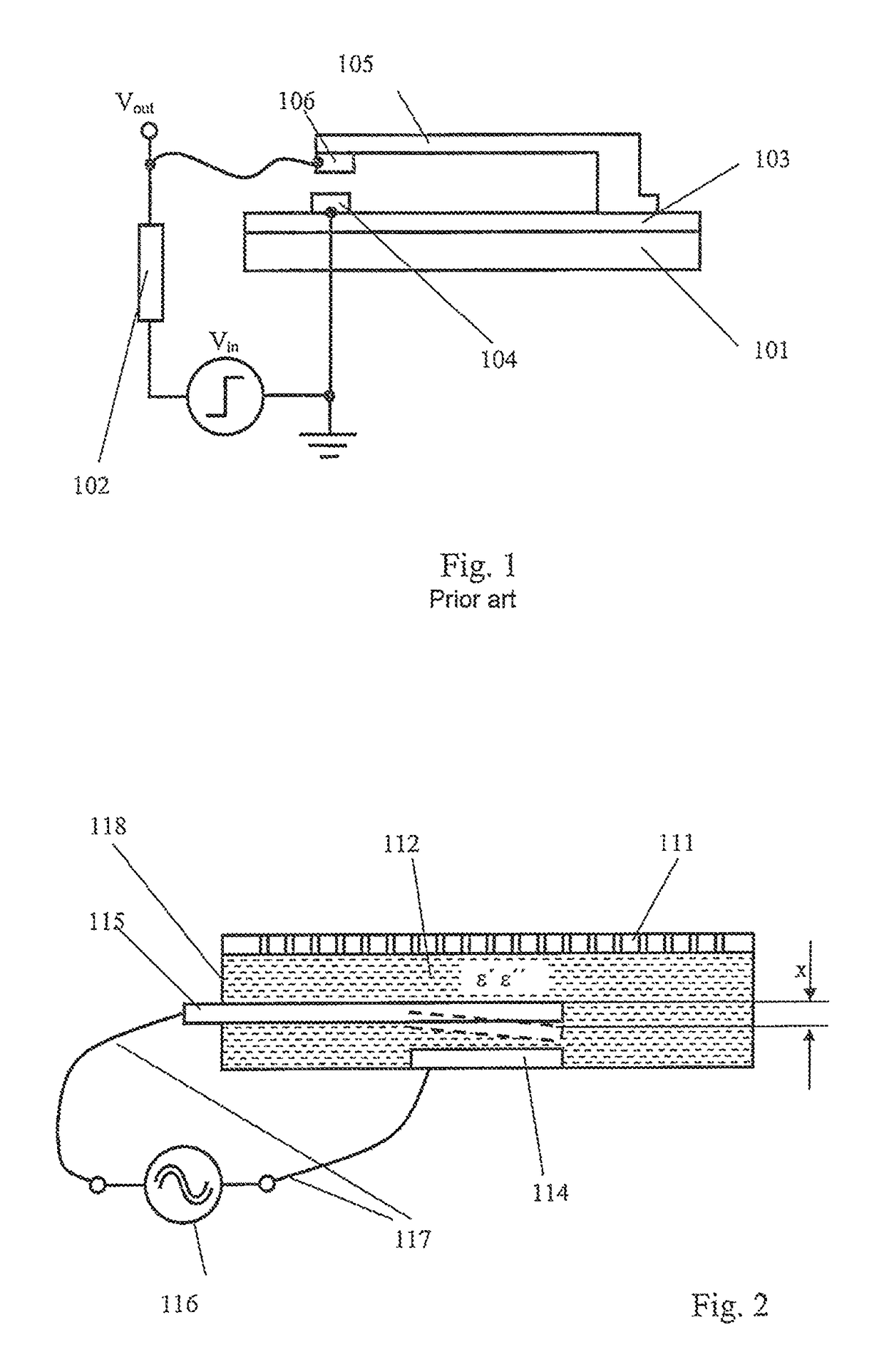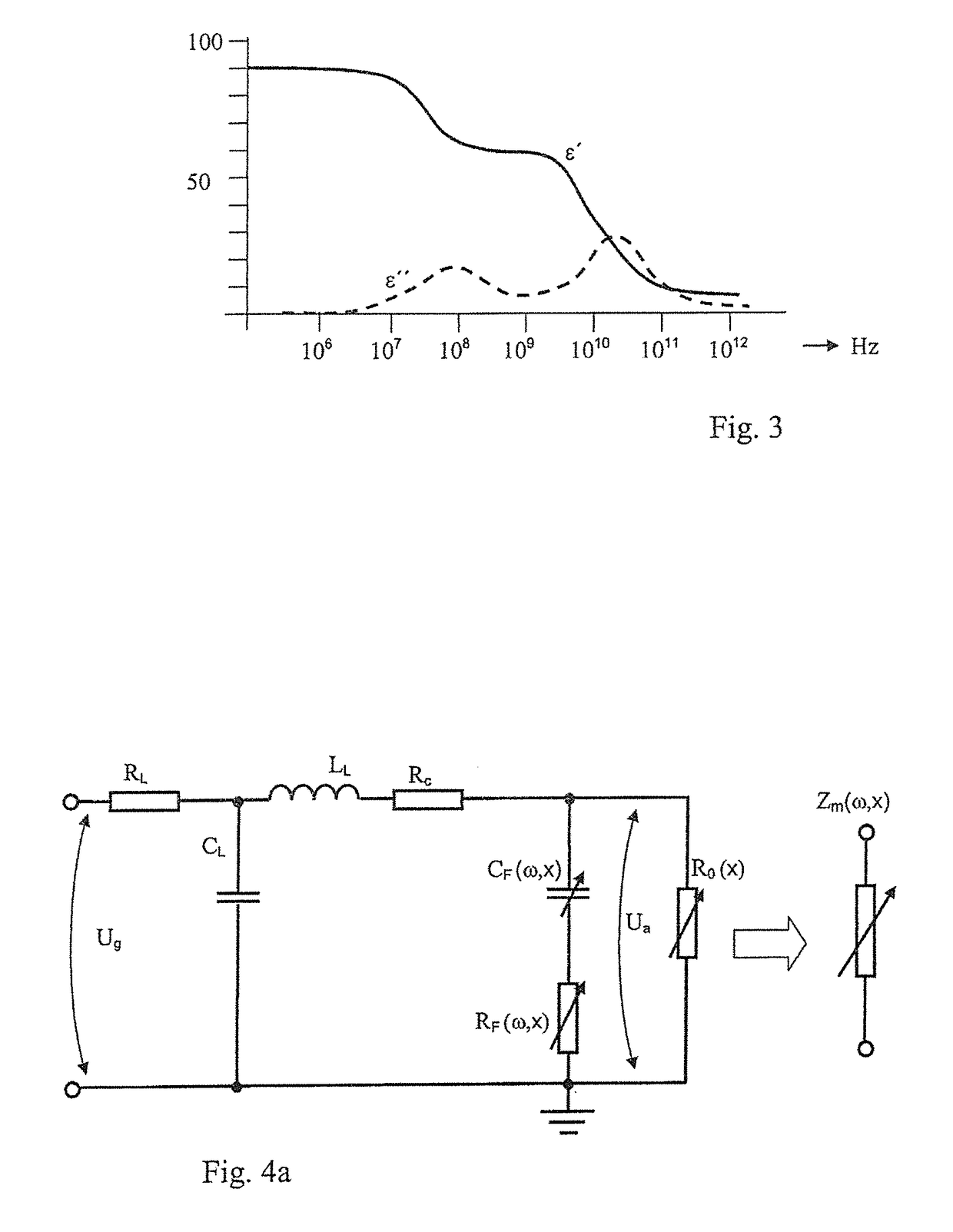MEMS-microviscometer
a microviscometer and micro-scopy technology, applied in the field of micro-scopy devices, can solve problems such as inability to accurately measure capacitive distances, and achieve the effects of high viscosity, convenient small design, and easy to measure viscosity
- Summary
- Abstract
- Description
- Claims
- Application Information
AI Technical Summary
Benefits of technology
Problems solved by technology
Method used
Image
Examples
Embodiment Construction
[0059]For the purpose of explaining an exemplary embodiment described below, FIG. 2 shows a schematic cross-sectional view of a measuring chamber 118 of a MEMS micro-viscometer. When an RF voltage is applied between an actuator in the form of an elastically deformable cantilever 115 and the counter electrode thereto, a ground electrode 114, a voltage is dropped between the electrode of the cantilever 115 and the ground electrode 114 across the fluid to be measured (measuring fluid) 111. As a result of the force of attraction between the electrodes, the cantilever 115 moves at a viscosity-dependent speed towards the counter electrode until the RF voltage is switched off by a measuring device which evaluates the frequency, an amplitude or a phase of the RF voltage.
[0060]The electrical properties of the fluid must not be ignored even when using an RF voltage to drive the actuator. The alternating current flowing through the fluid loads the RF voltage source according to the deflection ...
PUM
| Property | Measurement | Unit |
|---|---|---|
| frequency | aaaaa | aaaaa |
| frequency | aaaaa | aaaaa |
| frequency | aaaaa | aaaaa |
Abstract
Description
Claims
Application Information
 Login to View More
Login to View More - R&D
- Intellectual Property
- Life Sciences
- Materials
- Tech Scout
- Unparalleled Data Quality
- Higher Quality Content
- 60% Fewer Hallucinations
Browse by: Latest US Patents, China's latest patents, Technical Efficacy Thesaurus, Application Domain, Technology Topic, Popular Technical Reports.
© 2025 PatSnap. All rights reserved.Legal|Privacy policy|Modern Slavery Act Transparency Statement|Sitemap|About US| Contact US: help@patsnap.com



